CrossFit Strength Training Over 60: Transform Stiff Joints into Confidence and Mobility
August 3, 2025
Unlocking Joint Health and Mental Strength Through Smart Strength Work — Especially for CrossFitters Over 60
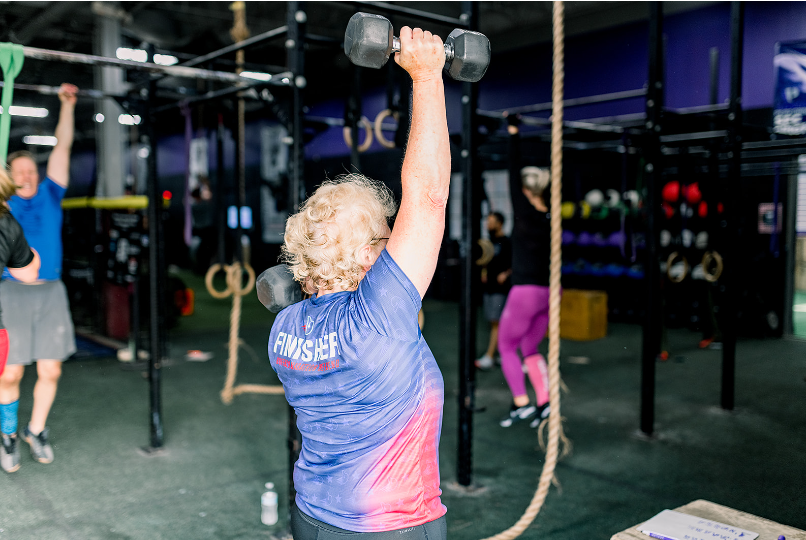
Why Strength Training Matters for Joint Pain After 60
Builds muscle support around joints
Resistance work strengthens muscles surrounding knees, hips, shoulders, and spine—providing extra stability, distributing stress more efficiently, and significantly reducing pain in conditions like osteoarthritis. Research shows regular resistance training improves joint comfort and function in older adults.
Improves lubrication, mobility & flexibility
Controlled movement cycles through joints produce synovial fluid and promote range of motion. CrossFit routines that begin with targeted dynamic warm‑ups and mobility drills help reduce stiffness and improve joint comfort over time.
Counters sarcopenia and protects joint structures
Progressive resistance training slows age‑related muscle loss (sarcopenia), preserving strength, balance, and daily function. Multiple studies underline that even older adults can develop muscle and maintain independence through thoughtful training.
How CrossFit Fluency Enhances Benefits After 60
Scalable, functional movements improve joint health
CrossFit’s methodology—constantly varied, functional exercises—can be scaled to support safe strength gains, joint stress reduction, and daily movement enhancement for older athletes.
Mobility integrated into every session
Warm‑ups and cool‑down mobility protocols in CrossFit enhance joint range, flexibility, and recovery—especially helpful for aging muscles and stiffness-prone joints.
Controlled progressive overload
Gradual increase in load and reps (progressive overload) encourages joint-supporting muscle development while minimizing injury risk: a key part of safe aging training in CrossFit programs.
Confidence, Freedom & Quality of Life
Greater strength → greater independence
As strength builds, everyday tasks—walking stairs, gardening, lifting grandkids—become routine again. This regained autonomy translates into emotional uplift and real-world confidence.
Stronger body, stronger mind
Strength training lifts mood, improves sleep, reduces inflammation, and supports mental resilience. Many older adults report that controlled resistance work helps manage stress, anxiety, and general well‑being.
Visible progress breeds belief
Seeing incremental gains—even small weight increases, smoother movement, or pain reduction—reinforces empowerment and builds self-trust over time.
Practical Tips for Safe, Effective Strength Training in CrossFit After 60
- Begin with mobility work: Warm up joints and tissues before lifting.
- Prioritize form over load: Controlled mechanics protect joints.
- Incorporate eccentric emphasis: Slow lowering under control builds strength with less joint stress.
- Use scaling and modifications: Use lighter weights or bands, box variations, and low-impact cardio (row, bike, ski erg) when needed.
- Rest and recover wisely: Include adequate recovery days and active mobility to prevent overtraining.
Why Strength Training After 60 Is a Game-Changer
Pain reduction and function:
Joint pain and stiffness decrease, and daily movement becomes easier and more fluid. Research consistently shows improvements in function and comfort with progressive resistance programs.
Fight chronic conditions:
Improved balance, bone density, metabolic health, and joint resilience all come from regular strength and mobility work—even at older ages.
Boosted confidence & quality of life:
Combining joint relief with strength gains fosters emotional resilience, greater independence, and a positive aging mindset.
Final Words
Integrating CrossFit-style strength training into life after 60 can be transformative: it reduces joint pain, improves mobility, builds functional strength, and restores confidence. With hands-on coaching, smart scaling, and thoughtful progression, it's never too late to reclaim movement, independence, and physical vitality.
Start with intention. Train with purpose. Thrive with strength—in body and mind.
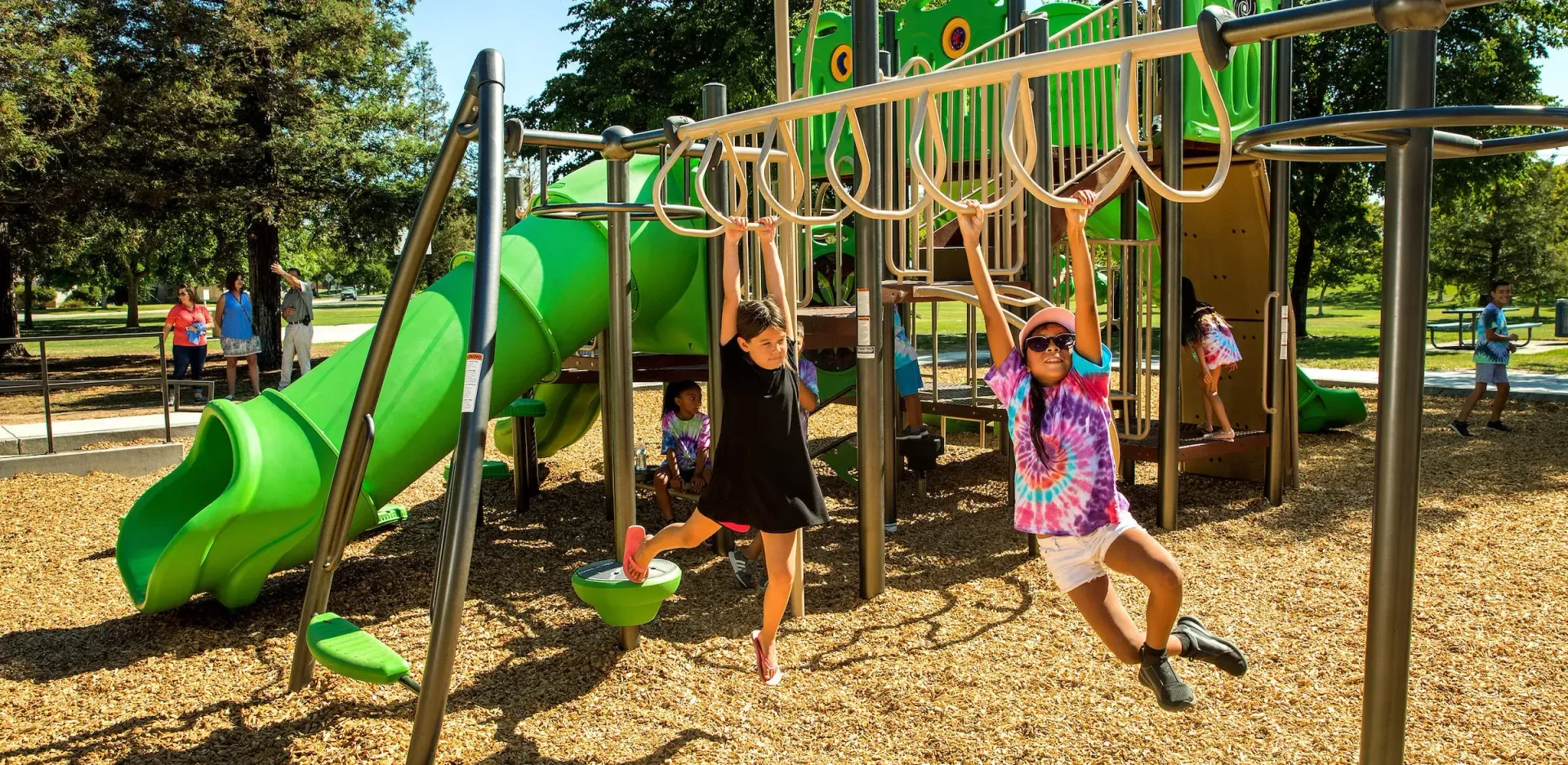
Why the Playground Moves Matter Children instinctively run, jump, climb, crawl and swing—movements that mirror the functional patterns used in coaching youth fitness. These foundational movement skills build coordination, balance, body awareness and mobility. When we package these movements in a fun, age-appropriate way, kids stay engaged and develop athletic competence naturally. By bridging the gap between play and structured training, youth CrossFit helps kids consolidate a strong movement foundation. This means that when they later engage in sports, organized training, or higher-level fitness, they’re already equipped with the basics. The Benefits of a Youth-Focused CrossFit Approach A dedicated kids CrossFit program offers several key advantages: Improved athletic capacity → When kids train with varied, functional movements (running, hopping, carrying, jumping), they build strength, speed, balance and endurance. Better movement literacy → Learning proper mechanics early helps children move more efficiently, reducing risk of injury and improving performance across sports. Confidence and mindset → As children master new skills, they gain self-belief, resilience, and learn that progress comes through effort and practice. Healthy habits for life → Early exposure to structured movement, fitness and positive coaching fosters lifelong attitudes toward health, activity and personal growth. Social skills & teamwork → Many youth classes use partner or group work, building communication, leadership and camaraderie among young athletes. Progression: From Free Play to Structured Performance Let’s break down the journey into stages, to give coaches and parents a clear roadmap. 1. Exploration & Fun (Ages ~5-8) Focus: Getting kids moving and playing, reinforcing basic movement patterns (run, jump, hop, crawl). Environment: Minimal equipment, short sessions, lots of games and movement variability. Goal: Build comfort in moving their bodies, exploring what the body can do, and beginning to control motion and space. 2. Skill Building & Basic Strength (Ages ~8-12) Focus: Introducing body-weight strength (squats, lunges, carries), light resistance, coordination drills, agility. Environment: Structured warm-ups, short skill blocks, fun workouts with challenges. Goal: Improve movement quality, build the “engine” for athletic performance, reinforce the habit of showing up and training. 3. Performance-Ready & Sport Transfer (Ages ~12-Teen) Focus: More advanced strength training (light barbells, kettlebells), plyometrics, agility/speed work, sport-specific drills. Environment: Longer sessions, goal setting, measurable benchmarks, peer support and friendly competition. Goal: Develop an athletic foundation that supports sport performance or higher-level fitness, prepare for transitions (e.g., high school sport, competitive programs). What Coaches and Parents Should Focus On Age-appropriate instruction: Make sure the coach and program scale movements, loads and complexity to a child’s stage of development. Movement quality over load: Emphasize form and control before adding weight or speed—especially for younger children. Fun, variation & progression: Kids thrive when workouts feel like games and challenges rather than chores. Vary activities and progress complexity gradually. Positive coaching environment: Encourage, celebrate effort and improvement, cultivate a growth mindset rather than just outcomes. Connection to sport or life skills: Help children see how what they’re doing translates into sports, play, life activities (running faster, jumping higher, being more agile). Safety & supervision: Qualified coaches, age-appropriate equipment, clear instruction and attentive oversight matter a lot. Consistency & mindset: Frequent engagement, incremental progress, and reinforcement of habits matter far more than occasional “big” sessions. Ready for the Podium: What That Looks Like “Podium” might mean different things depending on the child: It could be winning a medal, attaining a school sports starting spot, improving performance, or simply moving and feeling confident in their body. Here’s what “podium readiness” might look like for a youth CrossFit athlete: They can perform foundational movements (squat, hinge, push, pull, carry) with confidence and good mechanics. They demonstrate improved agility, speed, power (jumping, sprinting, changing direction) that transfers into their sport or play. They show mental resilience: they’re willing to try new movements, fail, correct, and improve. They understand habits of nutrition, recovery, movement—not because they’re told, but because they live them. They engage with peers, support one another, enjoy workouts, and see fitness as part of their identity. Final Thoughts Helping children move from playground fun to podium-level readiness isn’t about rushing them into heavy weights or complex training too soon. It’s about guided progression, fun movement, skill development, and empowering them to believe in what their body can do. When we get the foundation right, kids who engage in a well-designed CrossFit youth program gain much more than fitness: they gain confidence, resilience, movement competence, and habits that will serve them long beyond childhood sports.

1. Build a Strength and Power Base Before chasing top-end speed or fancy agility drills, you have to have the physical capacity to handle them. A strong, well-prepared athlete is less likely to get injured and more likely to improve when you add more complex work. What to focus on: Compound lifts such as squats, deadlifts, lunges, and hip-hinge movements, to build lower-body strength and force production. Sources emphasize that “strength is the foundation for speed and agility.” Plyometrics (“jump” or “explode” exercises) to train the nervous system and improve how quickly you can apply that strength. For example, box jumps and lateral bounds. Ensure that strength and power work is coordinated with movement quality (hips, ankles, posture) so that when you speed up or change direction, your body can handle it. Tip: Dedicate 2–3 days per week (depending on your sport load) to strength/power. Off days you’ll have for skill, speed/agility, recovery. 2. Focus on Acceleration and Sprint Mechanics Speed isn’t just how fast you can go—it’s how quickly you can reach that speed and how efficiently you move. The off-season is perfect for refining your sprint technique and your first few explosive steps. Key points: Work on start/drive phase: how you push off the ground, body lean, foot strike, arm swing, posture. For example, proper posture: eyes up, chin level, shoulders slightly ahead of hips. Use short sprints (10-30 yards/meters) to focus on acceleration, not fatigue. Use resisted sprints (bands, sleds) or hill sprints to build force and power in the sprint start and drive phase. Tip: Warm up thoroughly before sprint work and limit the number of maximal efforts per session to preserve quality. Quality > volume. 3. Train Change of Direction, Agility & Reaction Skills Many sports don’t rely only on straight-line speed—they rely on agility: changing direction, reacting quickly, decelerating, and then accelerating again. The off-season gives you time to practice these movements deliberately. What to incorporate: Cone drills, ladder drills, and shuttle runs. For example: the “5-10-5” shuttle, W-drill, chaos drill, and zig-zag cone patterns. These teach you how to change direction quickly, decelerate, and re-accelerate. Reaction drills: Have a partner or coach give a visual or auditory cue and you respond (cut, shuffle, sprint). This trains cognitive/physical link and game-like movement. Deceleration training: Many non-contact injuries occur when slowing down or changing direction. Teach yourself to decelerate safely and effectively. Tip: Start slower, emphasize technique, and gradually add speed. Especially important for younger athletes or those new to agility work. 4. Prioritize Mobility, Stability & Recovery Speed and agility are only as good as your body’s ability to move freely, stay stable, and recover between hard efforts. Without proper mobility and recovery, you increase injury risk and limit progress. Key areas to address: Mobility: hips, ankles, thoracic spine, hamstrings. These joints/areas play big roles in running, cutting, and accelerating. Stability and control: single-leg strength, glute activation, core control—especially important for change of direction and landing mechanics. Recovery: ensure you get adequate sleep, hydrate well, eat appropriately, and allow rest days or low-intensity days. Overtraining in off-season ruins progress. Tip: Use dynamic warm-ups before every session (leg swings, A-skips, hip openers), and include a cooldown (foam roll, static stretch) afterwards. On recovery days you might do light movement or mobility work. 5. Structure Progression & Track Your Improvements The off‐season gives you an opportunity to systematically improve rather than just “show up.” By structuring your work and tracking results, you’ll see progress and build confidence heading into the season. How to implement this: Use periodization: e.g., early off-season = strength and general conditioning; mid off-season = introduce speed/acceleration drills; late off-season = sport-specific agility and reactive work. Set measurable benchmarks: time a 10- or 20-yard sprint, record a 5-10-5 shuttle time, measure jump or bound distance. Progress drills over time: increase complexity of agility drills, increase speed, reduce rest, add reactive cues. Monitor fatigue and load, especially for high school athletes, balance training volume and intensity to avoid burnout or injury. Tip: Keep a simple training log: date, drill, reps/sets, notes (how you felt, mechanics, times). It helps you see where you’re improving and where you might be stalling. Improving speed and agility isn’t about doing a ton of “random sprints” or “lots of cone drills.” It’s about building a system: a strong foundation, efficient mechanics, reactive movement, mobility & recovery, and thoughtful progression. If you use this off-season wisely—applying these five strategies—you’ll walk into your next season faster, sharper, more explosive, and ready to win the first step. Looking to take your athletic game to the next level? Stop by Absolute Performance for a free intro session to tour our facility, meet our coaches, and see how we can help you train smarter, harder, and stronger!
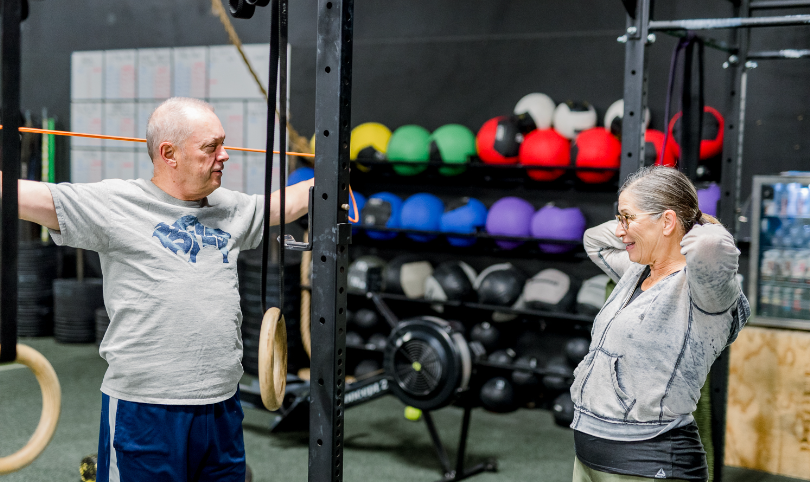
1. Your Body’s Craving Strength & Stability As we age, maintaining muscle, bone density, and functional movement becomes essential. CrossFit’s emphasis on compound, functional exercises (like squats, presses, and deadlifts) build strength that helps with everyday tasks—getting up from a chair, lifting groceries, or climbing stairs—while helping preserve bone health and reduce the risk of falls. Coaches scale these movements to suit any fitness level. 2. You Value Balance, Coordination & Safety Falls are a serious concern, but CrossFit workouts improve proprioception, stability, and coordination through drills like step-ups and agility training. Over time, members report better balance, confidence, and fewer accidental slips or stumbles. 3. You Thrive in a Supportive & Social Environment Retirement can bring social shifts, but CrossFit’s community-driven classes offer connection, camaraderie, and encouragement—key ingredients for mental wellness. This environment fosters emotional resilience, lowers stress, and sharpens focus through both social interaction and endorphin-boosting workouts. 4. You Appreciate Scalable, Personalized Workouts Whether you're rehabbing an injury or returning to fitness after a break, CrossFit offers endless adaptability. Coaches adjust intensity, movements, and load—so you're always progressing at the right pace, safely and sustainably. 5. You Prioritize Long-Term Wellness (Not Just Retirement Readiness) Retirement planning often focuses on finances or emotional preparedness—but being truly ready means building a foundation of physical longevity. Combining movement, strength training, and community engagement means creating a “health span account”—one that pays dividends in vitality, mobility, and joy as you age. Ready to Make Retirement Not Just Longer—but Healthier? If these signs ring true, you’re in a prime place to start integrating CrossFit into your pre- or post-retirement routine. A scalable, supportive fitness community can help you stay independent, strong, social, and active for the long haul. Want help getting started? Be sure to check out our CrossFit Legends Program here at Absolute Performance! BONUS: two free trial sessions on September 8th and 10th for anyone interested! All are welcome!
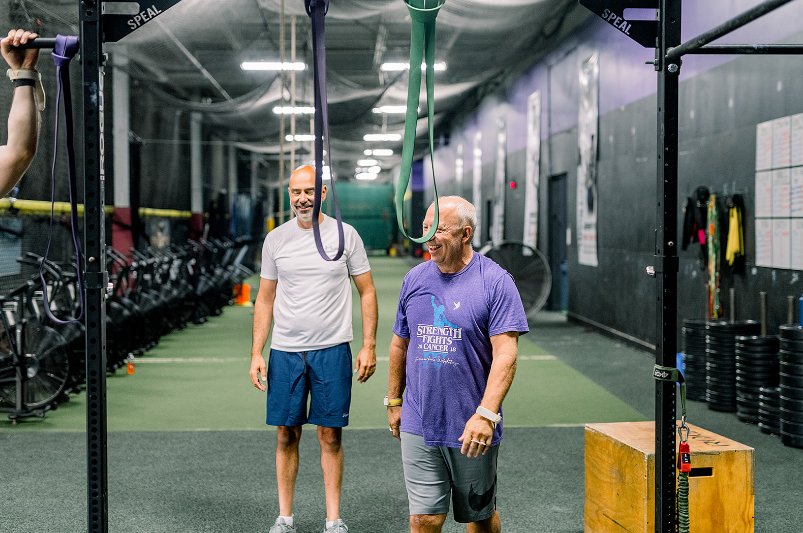
Week 1 – Stepping In You walk in and see friendly faces — coaches who greet you by name and classmates who are just as excited (and maybe a little nervous) as you are. We’ll take it slow, focusing on learning how to move safely, using light weights, and understanding how each exercise fits into real life. You leave with a smile, a bit of a sweat, and the feeling, “I can do this.” Week 2 – Finding Your Balance By now, you’re feeling more comfortable. Movements start to feel familiar. We work on balance, mobility, and core strength — the things that make climbing stairs, carrying groceries, and standing from a chair feel effortless. You notice you’re walking a little taller and moving with more ease. Week 3 – Feeling Stronger This is when you realize your body can do more than you thought. We add a little more challenge — always with options that fit your level. Your stamina improves, you recover faster, and you feel proud of your progress. Week 4 – Moving with Confidence We start blending strength, balance, and coordination into short, fun workouts. They’re quick bursts of effort followed by rest — designed to help you handle the physical demands of life with confidence. You might even start looking forward to the challenge. Week 5 – Everyday Power The strength you’ve built in the gym starts showing up in your daily life. You lift bags more easily, you’re steadier on your feet, and maybe you’re playing with the grandkids a little longer. Movements are more natural now — they’ve become your movements. Week 6 – Celebrating You We revisit a few simple exercises from Week 1, and the difference is clear. You move with more strength, control, and ease. We celebrate your wins — big and small — and help you set new goals, so the progress continues well beyond your first month. Why Our Legends Love It Expert, caring coaches who tailor every workout to you. A welcoming community of peers cheering each other on. Workouts that work for real life — no gimmicks, just results. 📅 First Class: Monday, September 8th 🕘 Schedule: Mondays & Wednesdays, 9:30–10:15 AM 🎟 FREE WEEK — Try it with zero pressure and see how you feel. 💻 Reserve Your Spot: https://www.goapnation.com/legends-program 📧 Email: goapnation@gmail.com
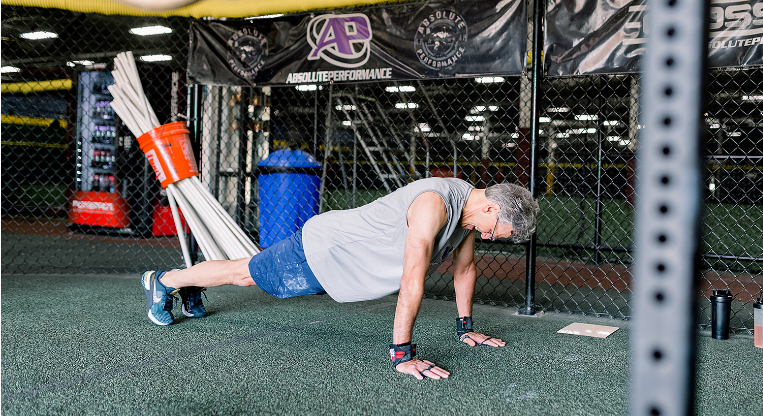
🦴 Preserve Muscle Mass & Bone Healthy Mobility As we age, muscle loss (sarcopenia) accelerates—up to 3–8% per decade after age 30. CrossFit’s use of functional movements like squats, presses, and deadlifts helps rebuild and preserve muscle and improve bone density. These movements support everyday activities like standing from a chair, lifting groceries, and climbing stairs. ⚖️ Enhance Balance, Coordination & Fall Prevention CrossFit workouts regularly include agility drills, step‑ups, heart-pumping carries, and balance-based movements—key tools for reducing fall risks. Strength and balance training combined can drastically lower the chance of falls in older adults. 🫀 Boost Cardiovascular Fitness & Longevity High-intensity intervals and metabolic conditioning in CrossFit elevate heart and lung health, helping prevent chronic diseases like heart disease, diabetes, and hypertension. Studies show regular strength training cuts mortality risk from major illnesses by significant percentages. 🧠 Improve Mental Well-Being & Cognitive Function Functional fitness—especially elements like endurance, coordination, and lower body flexibility—is closely tied to psychological well-being, resilience, optimism, and life satisfaction. Strength and metabolic conditioning also release endorphins, reduce anxiety, improve mood, and support brain health. 🤝 Community & Purpose Working out in a CrossFit environment isn’t just physical—it’s social. Lifelong fitness training helps older adults live longer, healthier lives, while the community aspect combats isolation, fuels motivation, and provides a shared sense of purpose. Why CrossFit Is Ideal for Folks Over 60 ✅ Built for All Fitness Levels: Scalable & Adaptable CrossFit is inherently adaptable. Coaches tailor workouts to individual fitness, mobility, and abilities. Whether swapping barbell lifts for dumbbells, reducing intensity, or using resistance bands, workouts are personalized and safe—making participation accessible at any level. ✅ Evidence of Progress with Age Despite common beliefs, “masters” CrossFit athletes continue to improve strength, endurance, and capacity as they age—even into their 60s and beyond. CrossFit Games data show masters' athletes can become fitter over time. ✅ Combines Strength, Endurance & Flexibility CrossFit’s blend of resistance, cardio, gymnastics, and mobility work builds a full spectrum of fitness—targeting longevity, independence, and functional daily capability. Real-Life Outcomes: What People Over 60 Are Saying Athletes in their 60s routinely complete CrossFit workouts at Rx-level intensity, modifying high-impact elements like box jumps into step-ups or scaled movements. Many note they feel stronger, more confident, and healthier now than they did in their 50s or 40s. Serving Up the Full Benefits of CrossFit Over 60
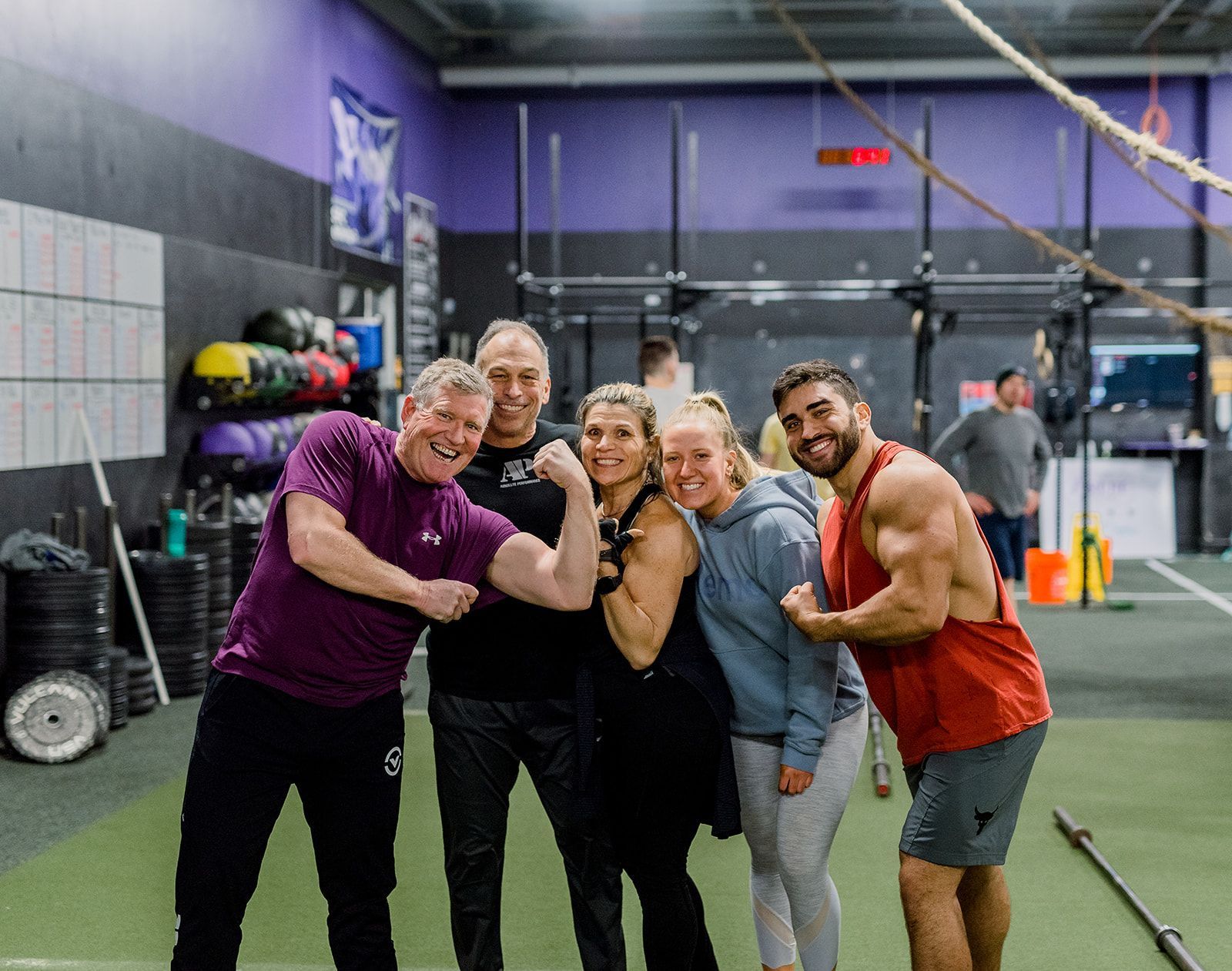
Stepping into a CrossFit gym is like entering a second home—you're not just signing up for sweat and reps, but for connection, encouragement, and shared purpose. Every WOD is a collective challenge, and every victory—even a small milestone—is celebrated together. That shared energy is what turns exercise into friendship, accountability, and belonging.
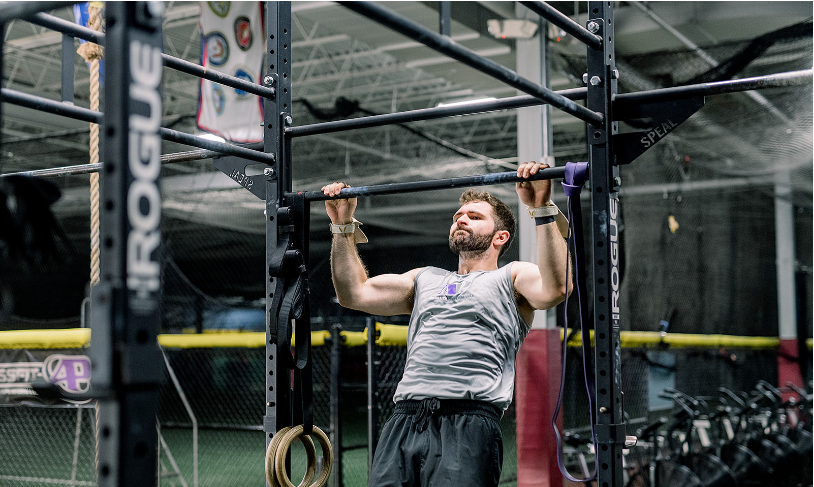
There’s something incredibly empowering about getting your first strict pull-up. It’s more than just a cool party trick or a gym milestone—it’s a true test of upper body strength, core control, and determination. Whether you’ve been hanging from the bar wondering how on earth people make it look so easy, or you’re stuck at the halfway point, this guide is for you. We’re breaking down the process step-by-step to help you build the strength, technique, and confidence needed to conquer your first strict pull-up—no momentum, no kipping, just raw power and progress. 1. Understand Why Strict Pull-Ups Matter Strict pull-ups build foundational upper‑body and core strength, stabilizing muscles, and grip—all essential for CrossFit. Plus, CrossFit methodology emphasizes strict pull-ups before kipping to ensure shoulder health and technical base. 2. Warm-Up & Mobility Prepare your shoulders, scapulae, and core with: Banded shoulder circles Scapular pull-ups: From a dead hang, shrug shoulders up then relax Joining the dots: lat pull-downs, hollow holds, or “behind‑the‑back” arm circles at the start of sessions 3. Eccentric (Negative) Pull‑Ups A staple drill for beginners: Start with chin above the bar (jump or use step) Slowly lower to full dead-hang over 5–10 seconds Repeat 3–5 reps per set, 3–5 sets This builds the exact muscles for the pull phase! 4. Isometric “Chin‑Over‑Bar” Holds Hold yourself with your chin above the bar for 5–15 seconds per rep. These develop top-end strength and teach your body to maintain position! 5. Segmented Negatives Combine holds and negatives: Start chin‑over‑bar → lower a few inches → hold → lower more → hold → finish. This isolates harder parts of the range of motion 6. Assistance & Regression Use assistance to practice full range: Bands: Start with thick bands for 8–10 reps, switch to thinner ones as you improve Chin-ups: Supinated grip reduces difficulty and engages biceps Inverted or ring rows: Great horizontal pull regressions (5–10 reps) 7. Frequency & Programming Stick with consistency: 2–3 pull‑up sessions/week: mix endurance/hypertrophy (sets of 6–10, e.g. assisted) and strength (negatives, max holds) Some CrossFit gym templates alternate Volume and Max Effort days (e.g. ABA/BAB weekly cycles) 8. Measure Progress & Patience Track reps, hold time, band thickness etc. It may take weeks to months—strength progress is individual Celebrate small wins: longer holds, thinner bands, cleaner negatives
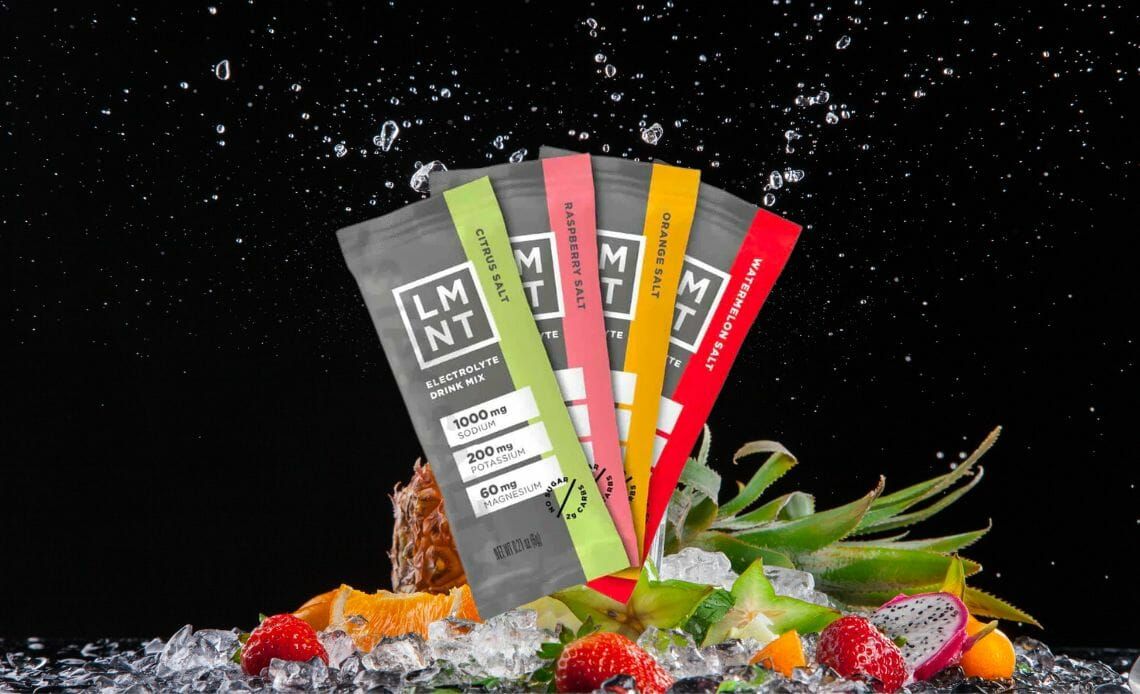
CrossFit workouts are high-intensity, high-output, and high-sweat. Whether you’re tackling “Murph” or grinding through a heavy EMOM, proper hydration is critical to unlocking peak performance and keeping your body functioning at its best. Let’s explore why hydration is essential and how you can dial in your hydration strategy to match your CrossFit demands.

As the temperatures rise and WODs get tougher, summer presents a unique challenge for CrossFit athletes striving to stay lean, strong, and energized. From strategic hydration with electrolytes and water-rich produce to smart meal timing and nutrient-dense snacks, these five summer nutrition principles are designed to help you power through grueling workouts and scorching heat—without sacrificing performance or recovery. Let’s dive into how slight tweaks can fuel your best season yet.

When most people think of CrossFit, images of intense workouts, Olympic lifts, and tire flips often come to mind. But ask any seasoned CrossFitter what truly drives performance, recovery, and long-term results, and you’ll hear one word: nutrition. CrossFit’s methodology doesn’t just stop at the whiteboard. At its core, CrossFit is a lifestyle model that integrates fitness, nutrition, and community. And when it comes to fueling the body, CrossFit’s stance is clear, science-backed, and refreshingly simple.


